Introduction: Unraveling PTSD and Anxiety
Living with unexplained feelings of uneasiness or intrusive memories can be distressing. While both PTSD (Post-Traumatic Stress Disorder) and anxiety disorders affect mental health, their roots and manifestations differ. This article seeks to help you understand these conditions, identify key symptoms, and explore potential treatment options.
Understanding PTSD vs. Anxiety
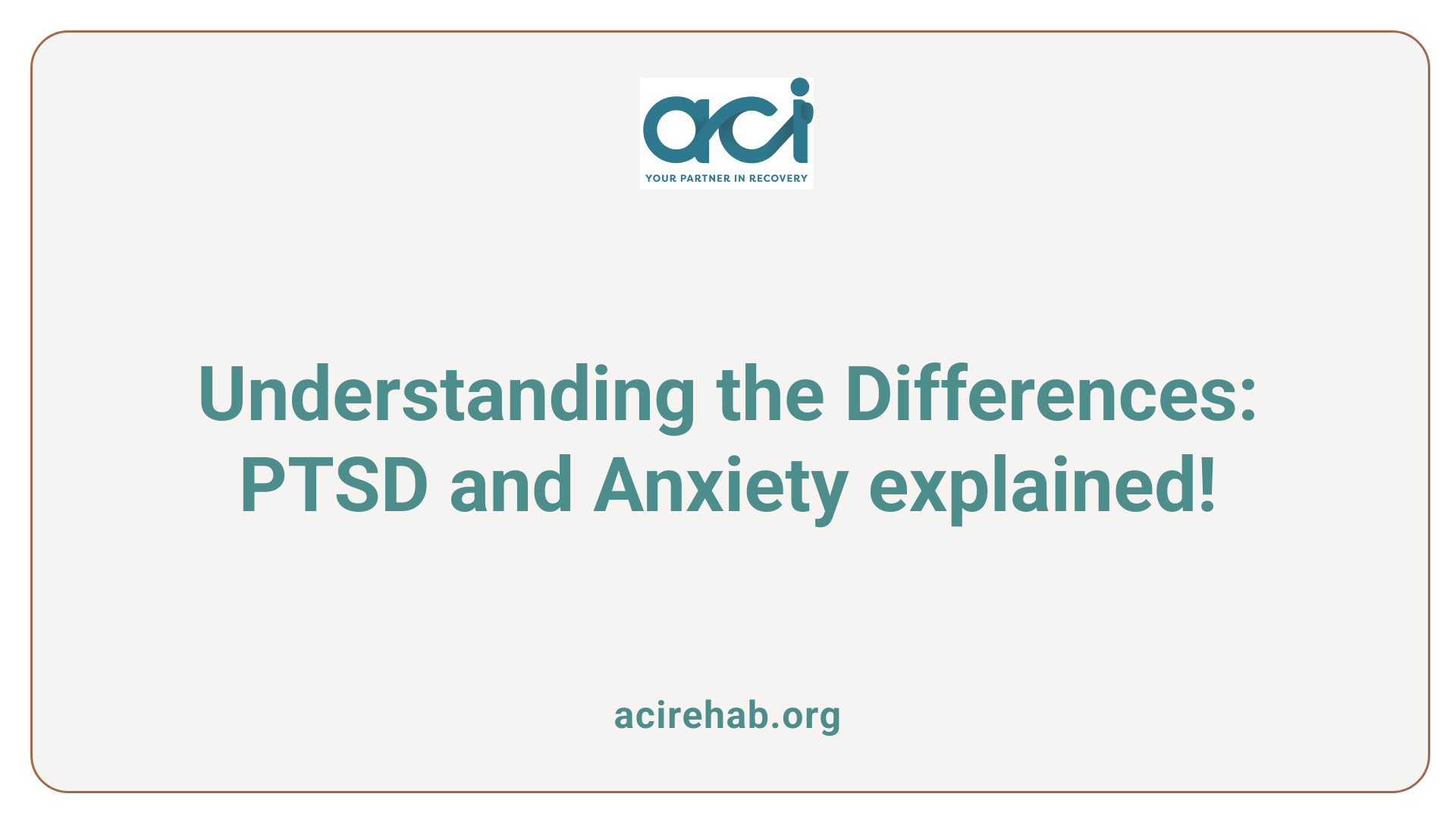
What is the difference between PTSD and anxiety?
The primary difference between PTSD and anxiety lies in their connection to past experiences. PTSD is specifically linked to traumatic past events and is characterized by symptoms such as flashbacks, avoidance of triggers, emotional numbness, and hypervigilance. In contrast, anxiety symptoms, which can include excessive worry, restlessness, and physical manifestations like chest pains, are not necessarily tied to a specific event.
It’s important to note that while both conditions share some symptoms, such as irritability and insomnia, the context is different. PTSD symptoms often emerge after experiencing a trauma and can result in significant struggles with daily functioning, whereas anxiety might occur without any identifiable trigger and can manifest in a variety of situations, leading to chronic worry.
Impact on daily life and relationships
Both PTSD and anxiety can severely impact daily life and relationships. Individuals with PTSD might find themselves avoiding places or people that remind them of their trauma, leading to isolation and strained relationships. They may also experience difficulties in communication, feeling disconnected from others, which can create barriers in social interactions.
Anxiety, on the other hand, can lead to similar outcomes, with excessive worry affecting work performance and personal relationships. Trouble concentrating and restlessness can hinder a person’s ability to engage in daily activities, thus affecting their overall quality of life.
Types of symptoms
The types of symptoms for PTSD and anxiety disorders can be categorized for better understanding:
| PTSD Symptoms | Anxiety Symptoms |
|---|---|
| Flashbacks, nightmares | Excessive worrying |
| Avoidance of reminders | Restlessness |
| Emotional numbness | Difficulty concentrating |
| Hyperarousal (e.g., irritability) | Physical symptoms (e.g., headaches) |
| Negative mood changes | Panic attacks |
Understanding these distinctions is crucial, as both conditions have significant prevalence and economic impacts on mental health services.
Spotting PTSD: Key Symptoms to Watch For
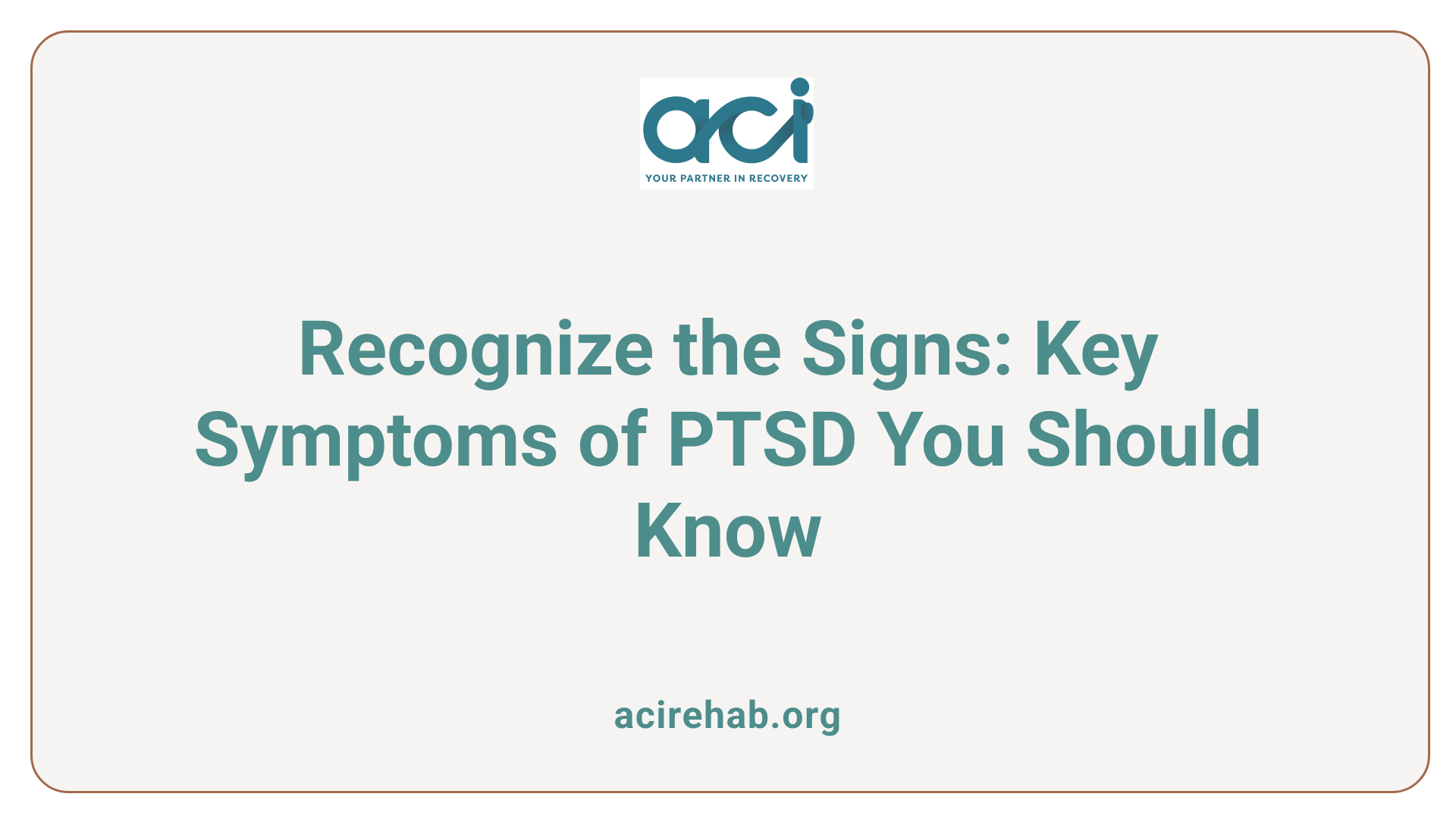
What are the key symptoms of PTSD?
Post-Traumatic Stress Disorder (PTSD) is characterized by a range of symptoms that can significantly impact an individual’s life. These symptoms are grouped into four main clusters: re-experiencing trauma, avoidance behaviors, negative mood changes, and heightened arousal and reactivity.
Re-experiencing trauma
Individuals with PTSD often relive their traumatic experiences through:
- Flashbacks: Vividly experiencing the event as if it were happening again.
- Nightmares: Disturbing dreams related to the trauma.
- Intrusive memories: Unwanted and distressing thoughts about the traumatic incident.
These symptoms can trigger acute anxiety and emotional distress.
Arousal and reactivity
Arousal symptoms are characterized by an increased state of alertness, which may include:
- Being easily startled
- Constantly feeling tense or on edge
- Irritability and aggressive behavior
- Sleep difficulties, such as insomnia or frequent awakening
These feelings can lead to significant disruptions in daily life and relationships.
Avoidance behaviors
People with PTSD might engage in avoidance strategies to cope, including:
- Steering clear of places, people, or activities that remind them of the trauma.
- Avoiding thoughts or discussions about the traumatic events.
- Emotional numbing, leading to a lack of interest in previously enjoyed activities.
Negative mood changes
Lastly, negative cognitive and mood changes may manifest as:
- Persistent feelings of fear or hopelessness
- Difficulty experiencing joy or positive emotions
- Guilt or shame associated with the trauma
This can lead to profound emotional pain and isolation.
Understanding these symptoms is crucial for early diagnosis and effective treatment. If someone shows signs lasting for over a month, seeking professional help is strongly advised.
Effective Coping Strategies for PTSD Anxiety
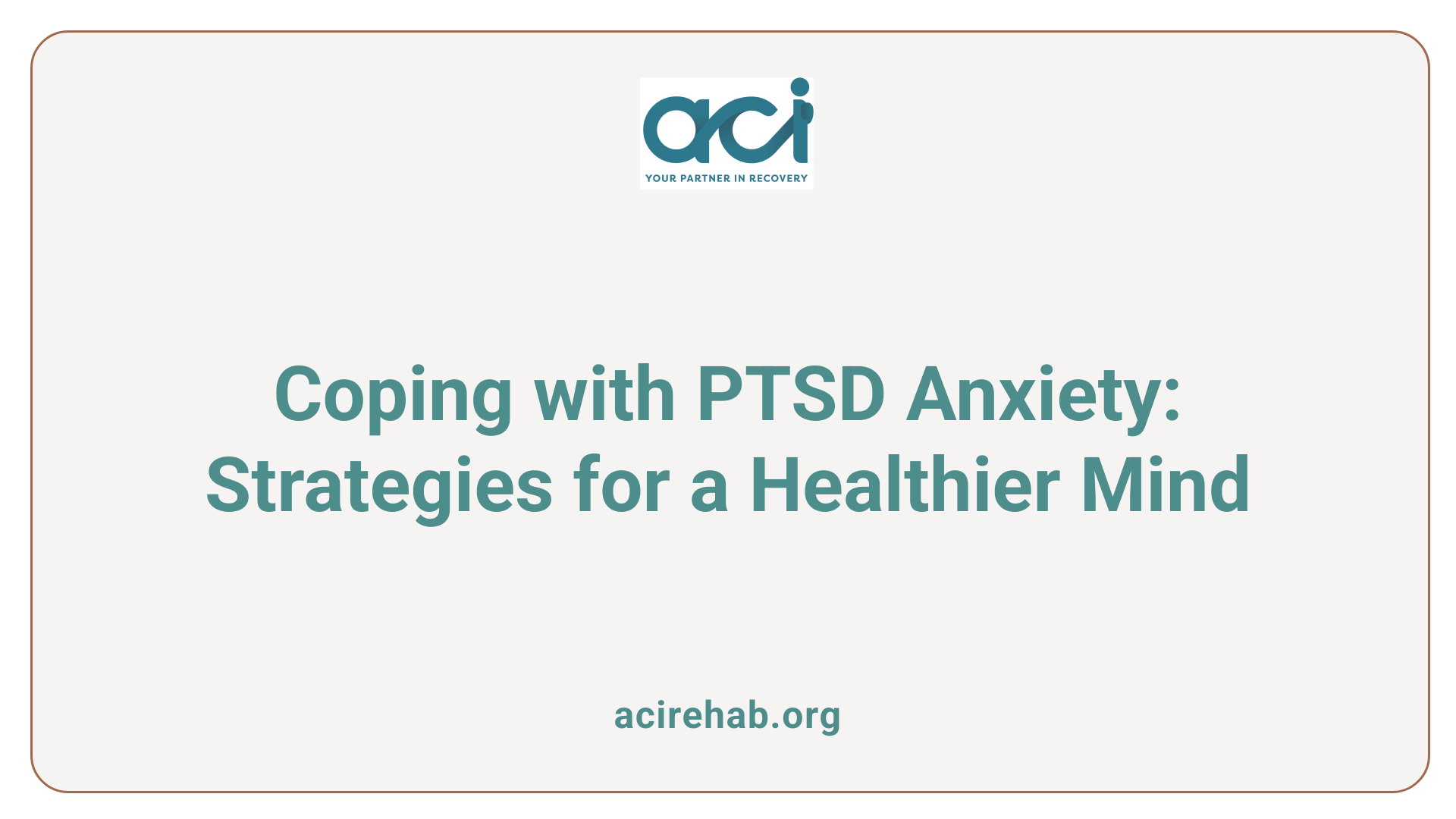
What coping methods help with PTSD anxiety?
Coping with PTSD anxiety involves various positive strategies that can empower individuals to manage their symptoms effectively. Here are some key methods:
- Learn About Trauma and PTSD: Understanding the nature of trauma can help individuals recognize their symptoms and reduce feelings of helplessness.
- Seek Support: Connecting with friends and family is crucial to avoid isolation. Support groups can also offer shared experiences and comfort.
- Practice Relaxation Techniques: Methods like deep breathing, mindfulness, or progressive muscle relaxation can help mitigate anxiety and promote calmness.
- Engage in Meaningful Activities: Finding enjoyable hobbies or social activities can distract from anxious thoughts and foster a sense of normalcy.
- Maintain Good Sleep Hygiene: Establishing a regular sleep routine can significantly improve sleep quality, which is often affected by PTSD.
- Use Symptom Tracking Tools: Mobile apps for tracking symptoms, moods, and triggers can provide insights that are useful for managing anxiety.
These strategies aim to foster resilience and improve emotional well-being in individuals affected by PTSD. It’s important to remember that recovery is a gradual process. Seeking professional help is advisable if symptoms persist or worsen, ensuring that individuals get the tailored support they may need.
Empowerment through Understanding Trauma
Gaining knowledge about how trauma affects mental and emotional health can empower individuals. Understanding symptoms such as hyperarousal or intrusive memories enables better coping strategies, making recovery feel more manageable. PTSD education can play a crucial role in dismantling misconceptions and reducing self-blame.
Support Systems
Creating a strong support system is essential for individuals experiencing PTSD anxiety. This can include close friends, family, or professional support from therapists. Engaging with others who understand the experience of trauma can provide validation and reduce feelings of isolation. Participation in peer support groups can also foster healing and connection, reinforcing that individuals are not alone in their struggles.
Factors Worsening PTSD Symptoms
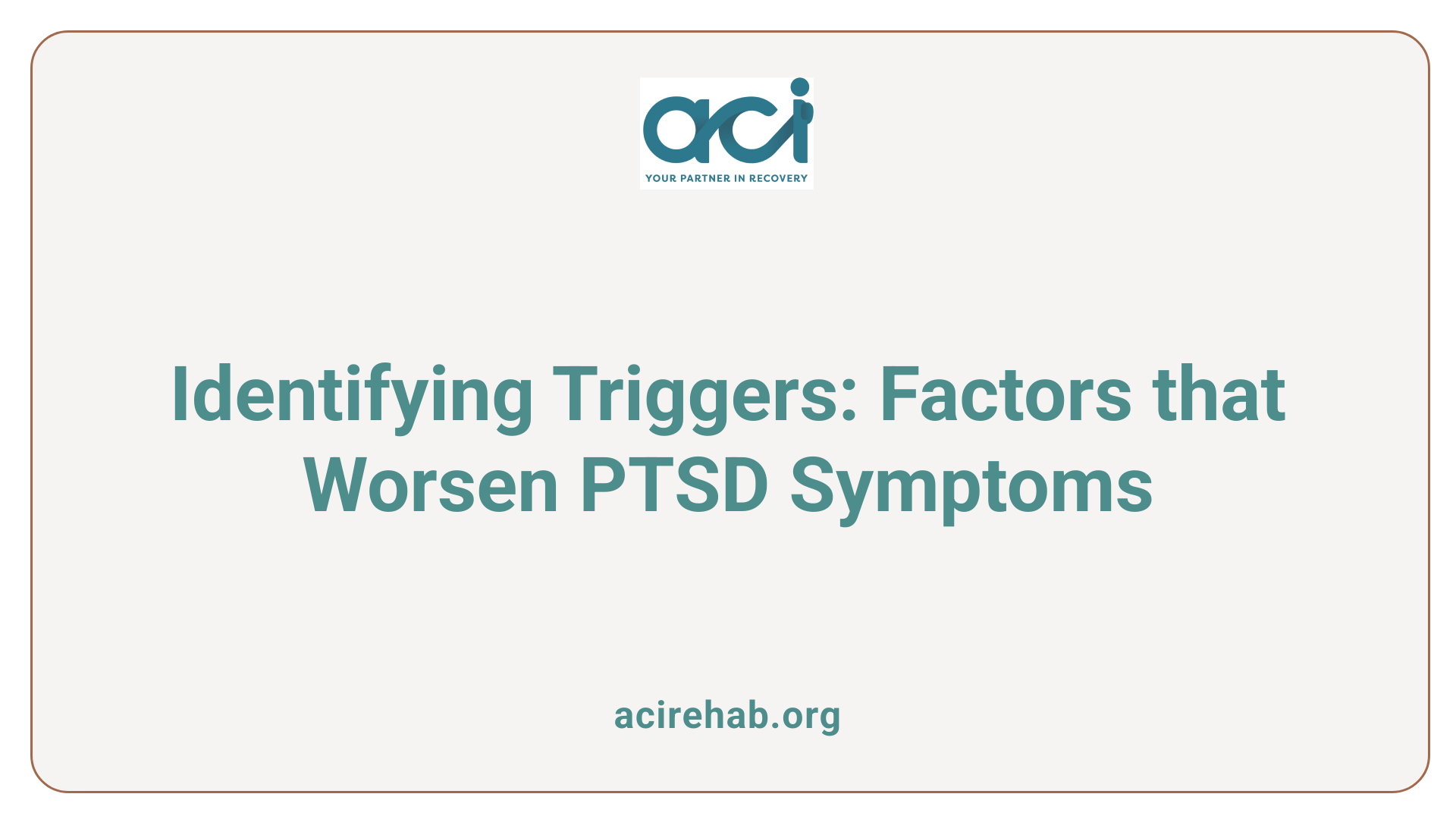
What makes PTSD symptoms worse?
PTSD symptoms can be significantly worsened by various factors. High levels of stress often act as potent triggers. Individuals may experience intensified symptoms if they encounter reminders of their trauma, such as unexpected sounds or certain situations that evoke memories of the event.
Stress and Trauma Triggers
Specific triggers can throw someone into a state of heightened anxiety. This includes:
- Unexpected reminders: Sounds, places, or people that are associated with the traumatic event.
- High-stress situations: General life stressors that can remind individuals of their past experiences.
- Social interactions: Difficulties in engaging with others can exacerbate feelings of isolation and lead to withdrawal.
Support Systems
A strong support network is vital. The absence of understanding or support from friends and family can lead to:
- Increased feelings of helplessness and loneliness.
- Escalating emotional symptoms, including anger or despair.
- More pronounced avoidance behaviors which can hinder recovery.
Co-occurring Mental Health Issues
Individuals with PTSD often deal with concurrent mental health conditions, such as anxiety or depression. This dual diagnosis can make the symptoms of both conditions more challenging:
- Increased emotional reactivity: Reacting strongly to minor irritations or distress.
- Difficulties with sleep: Insomnia or disrupted sleep patterns can further deteriorate mental health, leading to fatigue and irritability.
- Concentration difficulties: Struggling to focus can impede daily activities and overall functioning.
Engaging in therapy and implementing coping strategies is crucial. Early intervention and timely support can greatly assist in managing and mitigating worsening PTSD symptoms.
Diagnostic Criteria for PTSD and Anxiety Disorders
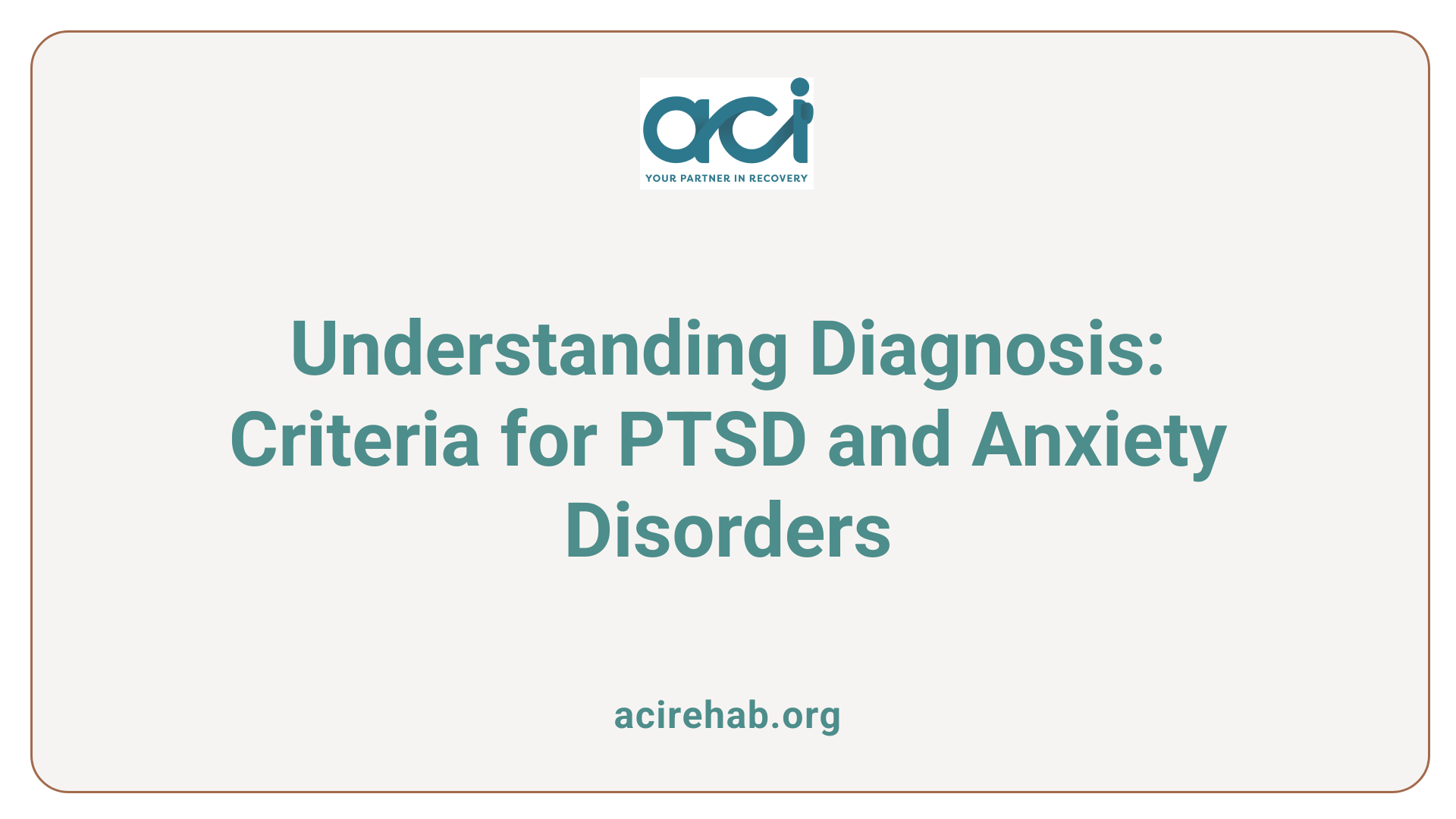
What are the diagnostic criteria for PTSD and anxiety?
The diagnostic criteria for Post-Traumatic Stress Disorder (PTSD) are outlined in the ICD-11, which emphasizes the importance of experiencing specific symptoms after exposure to a traumatic event. Key symptoms include:
- Intrusive thoughts: This can manifest as distressing memories or flashbacks.
- Nightmares: Recurring dreams related to the trauma.
- Avoidance: Steering clear of reminders associated with the traumatic event.
- Hyperarousal: Increased anxiety, irritability, or difficulty sleeping.
- Negative mood changes: Ongoing feelings of hopelessness or detachment from others.
To qualify for a PTSD diagnosis, symptoms must persist for over a month and significantly impair daily life.
How is anxiety disorder diagnosed?
Anxiety disorders are identified by a pattern of excessive fear or worry, marked by:
- Persistent anxiety: Occurs across various contexts, not tied to a single trauma.
- Physical symptoms: Such as muscle tension, restlessness, and sleep disturbances, lasting at least six months for an official diagnosis.
What are the overlapping symptoms?
Both PTSD and anxiety disorders share several symptoms, likely complicating their diagnosis:
- Sleep disturbances (insomnia or nightmares)
- Irritability or heightened emotional responses
- Difficulty concentrating
Recognizing these overlapping traits is crucial for effective treatment, as they may indicate the presence of both conditions.
Exploring Treatment Options for PTSD and Anxiety
What treatment options are available for PTSD and anxiety disorders?
Treatment options for PTSD and anxiety disorders encompass a range of therapies and medications tailored to the individual’s needs. Key therapeutic approaches include:
- Cognitive Behavioral Therapy (CBT): A widely used method that helps patients understand and change thought patterns that lead to distress.
- Cognitive Processing Therapy (CPT): Focuses on altering negative thoughts related to trauma, aiding in recovery.
- Prolonged Exposure Therapy (PE): Gradually exposes individuals to trauma-related memories and situations in a controlled environment to reduce fear and avoidance.
- Eye Movement Desensitization and Reprocessing (EMDR): Integrates bilateral stimulation with guided imagery to help process traumatic memories.
Medications are also a cornerstone in treatment. Commonly prescribed medications include SSRIs like sertraline and paroxetine, and SNRIs, which help alleviate anxiety and depressive symptoms. Some may utilize anti-anxiety medications on a short-term basis, although caution is advised due to potential risks of misuse.
Why are individualized treatment approaches important?
An effective treatment plan for PTSD and anxiety must be individualized. Each person’s experience with these disorders is unique, influencing the efficacy of particular therapies or medications. Treatment decisions are best made through a collaborative approach with a healthcare provider, ensuring that strategies align with the individual’s specific symptoms and preferences. This tailored approach maximizes the chances of recovery and improves overall mental health.
How important is professional consultation?
Consulting a mental health professional is essential when addressing PTSD and anxiety. A thorough assessment allows for accurate diagnosis and the formulation of a customized treatment plan. Early intervention can prevent symptoms from worsening, highlighting the importance of seeking help if symptoms persist and begin to interfere with daily life. Mental health professionals can guide individuals in navigating their treatment options, providing the support necessary for effective recovery.
Conclusion: Seeking Help for PTSD and Anxiety
Determining whether you are experiencing PTSD or an anxiety disorder can be complex, yet understanding the differences in symptoms and triggers is a crucial first step. Both conditions can deeply affect everyday life, but with professional help, effective treatments, and supporting coping strategies, individuals can navigate their mental health journeys more effectively. If symptoms persist, seeking advice from a healthcare provider can ensure that you receive accurate diagnosis and appropriate care tailored to your needs.
References
- Is it Anxiety or PTSD? | Liz Miller Counseling – Moscow ID
- Generalized Anxiety Disorder vs. Post-Traumatic Stress Disorder
- Post-traumatic stress disorder (PTSD) – Symptoms and causes
- Seven Signs You Have Mild PTSD Rather Than Anxiety – San Diego
- Symptoms – Post-traumatic stress disorder – NHS
- Symptoms of anxiety and how to know when you need help
- How Do I Know If I Have PTSD? What Are the Symptoms? – WebMD
- The Difference Between Anxiety vs PTSD | The Phoenix
- Post-Traumatic Stress Disorder – National Institute of Mental Health
- PTSD and Anxiety: Can You Have Both? A Psychiatrist Explains

